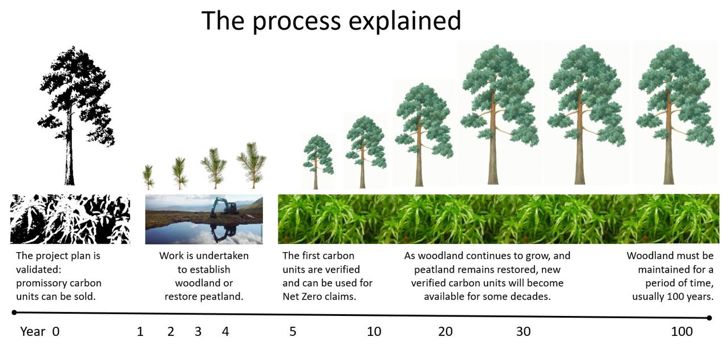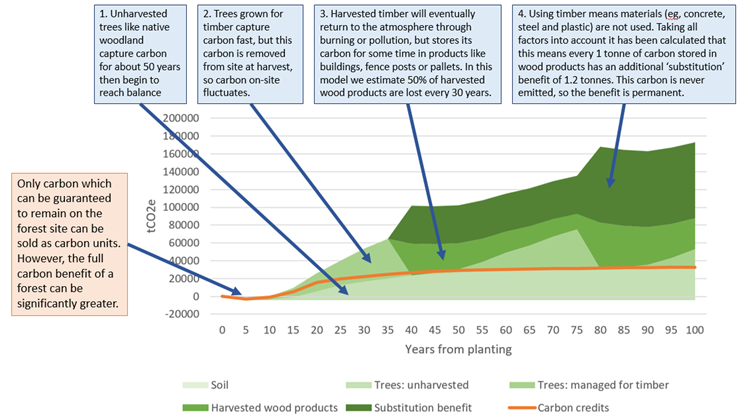
Calculating carbon
Based on comparisons with other woodland and peatland, the Woodland Carbon Code and Peatland Code produce a reliable carbon capture forecast for each project. The codes are conservative, ensuring that only carbon which can confidently be guaranteed can be traded:
- They include substantial buffers and insurance to allow for unexpected events.
- Trees which will be harvested for timber can only earn credits for the forest as it stands on site at any given time.
- Native woodlands which will not be harvested can sell credits for the whole forest.
- Carbon credits do not include the benefit of carbon stored in wood harvested from the forest, or substitution of wood products for carbon-emitting alternatives. Although this wood may still deliver significant carbon benefit, it is no longer the woodland owner’s property so cannot be traded by them. We note these under the extra, ‘non-accredited’ benefits.
- Credits cannot be earned for activities which would have happened anyway – for example, where forestry is a better commercial option than any other land use on the site, or peatland restoration which is done under legal obligation.
Carbon units are therefore a strongly robust way to offset carbon. They demonstrate ‘additionality’, required globally to demonstrate that this carbon would not have been saved otherwise, in the normal course of business.
However, this means carbon units cannot be used as a proxy measure for the whole carbon benefit of a forest or peatland.

The process
Registration
We register the site and information about the proposed scheme with the Woodland Carbon Code and/or Peatland Code.
Validation
Detailed information about the scheme, including carbon calculations and demonstration of additionality, are validated by an independent third party. Validated woodland or peatland carbon units can be sold, but cannot be used to make Net Zero claims. However, they can allow companies to say they have a plan to be Net Zero by a future date.
Verification
Verification of woodland or peatland projects begins at year five and is repeated every ten years after. Verified carbon units can be sold and can be used to make claims of carbon neutrality or to be Net Zero.
About Nature’s Carbon
The project duration is the time over which carbon sequestration claims are to be made, which can be up to 100 years, or for shorter periods either due to carbon potential constraints or to limit commitment.